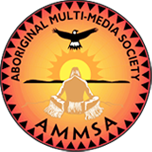Article Origin
Volume
Issue
Year
Page 3
Cree script's ancient origins probed
Do Cree Indians write the same script as Jesus? Research undertaken by Dr. Anne Anderson Native Heritage and Cultural Centre points to many "uncanny" similarities between the ancient Aramaic scripts and the modern-day Cree syllabary.
The Aramaic script is an ancient writing form developed in the middle east about 3,000 years ago, says centre executive director Buff Parry.
"The Aramaic language is actually the parent language of the later Arabic and Hebrew languages which are still in use today," he said.
The Cree syllabary also closely matches other ancient languages such as Persian-Pahlevi, a language formed in the Iran area, Arabic and Tatar-Mongolian, a language thought to have been developed in or around China in the 1200s.
However, Dr. Hugh Dempsey, the associate director of Calgary's Glenbow Museum and author of many books on the Blackfoot tribes and plains area history says Parry and Anderson are "mistaken".
"There is plenty of evidence that the Cree syllables were developed by the Rev. James Evans, (a Wesleyan missionary) in about 1840 or so," he says. "It is well documented in his journals and in the journals of the Rev. Rundle."
Dempsey says he has an open mind about the origins of the syllabary, but says Anderson's proof is "not conclusive."
"If the Indians of that time could write, and that information was available fur traders would have used this. There is no indication, no reference and I've never heard of any of these theories."
But Parry counters that the "wealth of evidence" is weighed on the side of the pre-Columbian origin of the syllabary.
"In 1653 Fr. Bressani reported Indians of New France (Quebec) used "little sticks instead of books which they marked with signs; in 1681 the Nipmauq Algonquians of Massachusetts signed the Sutton Land Deed in their own form of script identical in shape and sound to the ancient Semitic, a script developed 3,000 years ago in Crete, an island near Greece.
The same script is related to the Cherokee, Abenaki and other Algonquian scripts," he said.
Parry and Anderson say they were unable to find any evidence that Evans did actually create the syllabary. And any reference in his journals to teaching the script did not mention that he had actually invented the word symbols.
"Where does Dempsey get his evidence?" asked Parry. "We were not able to find one shred of evidence, in fact most scholars do not believe that Evans invented the syllabary."
Other scholars have also investigated the origins of the syllabary. In 1980 the Suton Historical Society published a paper which stated that the early settlers regarded early Native scripts as "illiterate marks." Later on missionaries such as James Evans became aware of some of the Algonquian scripts and adopted them for teaching the Christian religion."
The society paper adds that Evans had been "wrongly credited with 'inventing' the Cree scripts; what he really did was something much more praiseworthy, he made it the official method of printing the Cree language, including the entire Cree bible ? and thereby he preserved an ancient alphabet."
In a letter addressed to Dempsey, Dr. Anderson last week withdrew from the Glenbow museum's The Spirit Sings exhibition to side with the Lubicon Lake band's boycott of the Olympics, but particularly in protest of what she says is Dempsey's "deliberate suppression" of her research.
Last year Parry applied for a grant to research the LaVerendrye expedition which he says travelled from Dakota to the Rocky Mountains near the Old Man River in the 1700s. LaVerendrye had written that he found an inscribed stone hidden in a hoodoo near the Rockies, but some scholars, including Dempsey say Laverendrye travelled only to Dakota.
"I have studied the journals and writings of that time, and indeed the description of LaVerendrye's travels are well detailed," says Parry. "He must have travelled northwest, through Saskatchewan and then throgh Alberta to the mountains."
Parry feels that if enough research could be undertaken the stone which was taken from the hoodoo could be found and the "strange language", which he feels could well be ancient Cree, script could be read.
"But this research was blocked and now we may never know," he says.
However, Dempsey says Parry is "over imaginative", and that he has to read the LaVerendrye scripts but "cannot recognize the places referred to as being near or even close to Canada."
Dempsey has since written a letter to Anderson saying he was disappointed over her refusal to participate in The Spirit Sings exhibition.
"I found your refusal puzzling," says Dempsey, who indicated he did receive a letter from Parry, who was at that time residing in Ottawa, and did not make the connection between Anderson and Parry.
"I admire and respect the work you have undertaken," said Dempsey to Anderson.
However, although Parry and Anderson say much of their work and research has been blocked, they will continue to investigate the Cree syllabary. Next month the Assembly of First Nations will be holding a language conference on indigenous languages and Parry and Anderson will be submitting position papers.
"Right now we are working on the opening ceremonies," says Parry. "We are planning on a ceremony in Chipewyan and another in Cree."
The conference will discuss, identify and propose an Aboriginal language policy for the assembly as well as form a system of language retention. Anderson has already submitted her paper on the origins of the Cree syllabary. The conference takes place Jan. 19, 20 and 21 at the Skyline Hotel in Ottawa.
- 2350 views
